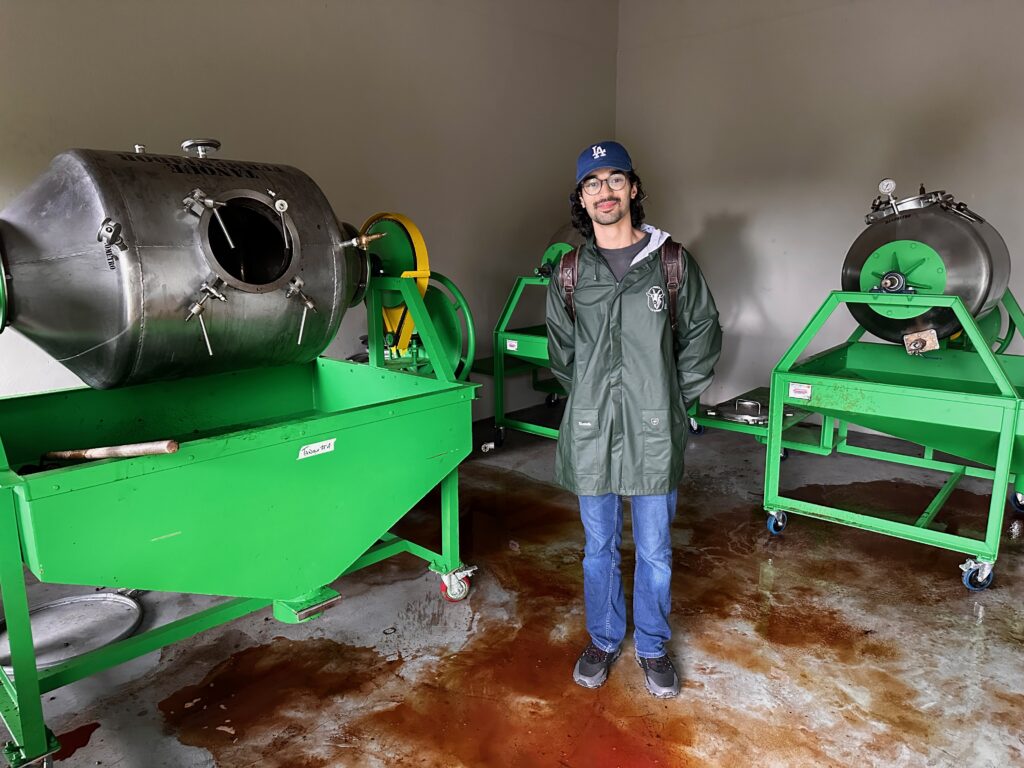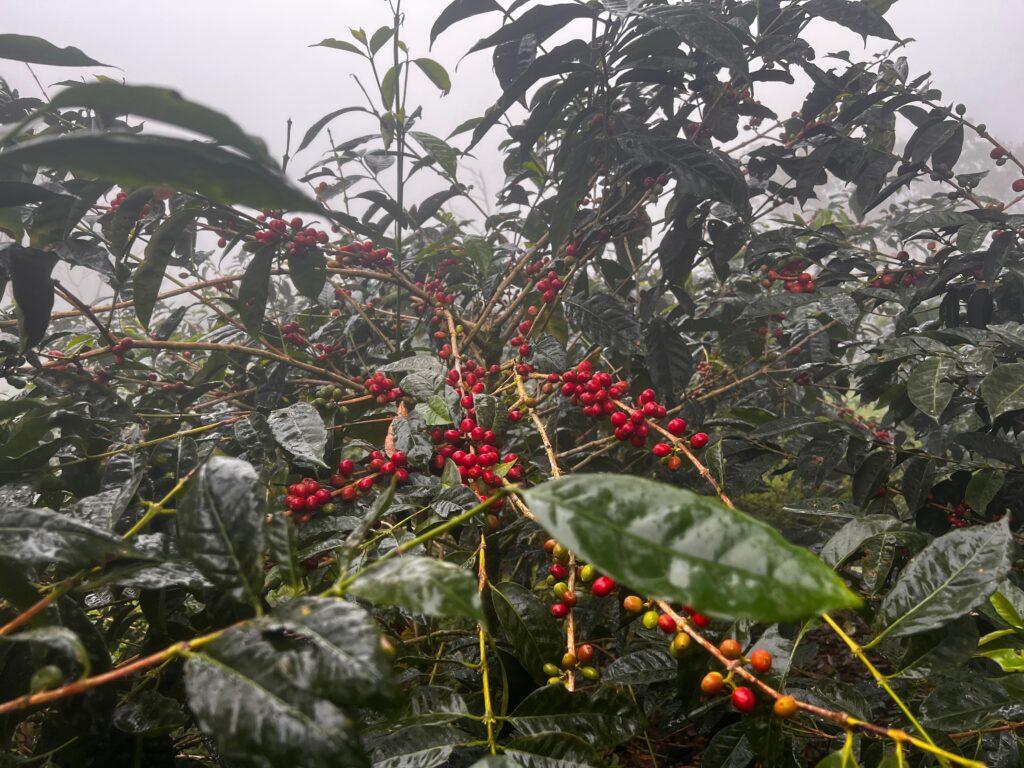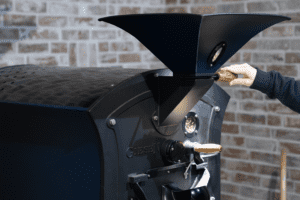Welcome to this newest episode of Behind the Roast. Willem talks about different processing methods and how they can effect the roasting and taste of coffee. Last month, Willem talked with Aharon Vaknin about the joy of coffee. Missed that one? Click here. Enjoy the tenth episode of ‘Behind the Roast’ with Willem Boot!
In 2015, Australian barista and coffee roaster Sasa Cestic won the World Barista Championships with a memorable presentation featuring a coffee produced with a special fermentation process called “Carbonic Maceration”. His victory had a huge impact. He inspired countless coffee producers around the world to experiment with fermentation protocols to improve the flavor of their coffee. Today, special fermented coffees are the new trend in the world of specialty coffee. Traditionally, the taste of over-fermented coffee has been considered a serious taste defect. It can ruin the quality of the coffee and significantly damage the reputation of the producer.
What is fermentation?
Fermentation is a chemical process in which carbohydrates from starches, yeasts, and sugars are converted into alcohol or acids. From a historical point of view, fermentation is the oldest method of preserving food. Archaeologists discovered some time ago original Neolithic Chinese pottery used for holding one of the world’s oldest brewed beverages made from fermented rice, honey, and fruits. Analysis showed these were used around 7,000 BC. Wine making dates back to around 6,000 BC. in Georgia, in the Caucasus region of Eurasia. In The Netherlands, fermented cabbage, sauerkraut, has been a trusted ingredient of an average Dutch meal for more than 200 years. Over the past ten years, new fermented flavors have become popular in the Western world. These include the tangy notes of kombucha or the compelling taste of fermented kimchi vegetables.
The role of fermentation in coffee
It should come as no surprise that for the production of green, unroasted coffee beans, the process of fermentation has also been fulfilling a new role. Initially, until the end of the 19th century, almost all coffee in the world was produced using the so-called “natural process”. At the time, the Netherlands played a relatively important role in the production of coffee through the immense plantations on the colonial Indonesian island of Java. The production of natural sun dried coffee also became a popular processing style in Brazil. In natural preparation, freshly picked berries are slowly dried with solar heat and finally, special machines remove the dried husks from the beans. In the 20th century, the introduction of the “washed preparation” followed, in which the coffee cherries are first de-pulped, after which the mucilaginous layer of the coffee is washed through a fermentation process.
About washed coffee
The fermentation process of the original “washed” coffee had mainly a functional reason. In terms of taste, this preparation was mainly used to give the coffee a clean and refreshing taste profile. Since the beginning of the 21st millennium, production techniques and taste preferences of coffee have slowly shifted. Countries such as Ethiopia refined the production techniques of “natural” and “honey” coffees, and these techniques were also embraced by coffee producers in Latin America for the production of high-quality specialty coffees. Consumers in relatively new coffee-consuming countries, such as South Korea, Taiwan, and China, became addicted to the often exuberant flavors of “naturally processed” coffees, and innovations with specialty fermented coffees took off swiftly.

The carbonic maceration process, which was officially introduced in 2015, is just one example of the numerous processes coffee producers are experimenting with today. The fact that we now live in different times as far as coffee is concerned is apparent. Not only from the changing taste preferences but also from the new language used to describe the taste profile of coffee.
Understanding the process
Because fermentation is so complex, there are infinitely many different outcomes. An uncontrolled fermentation can lead to bitter and even chemical-like flavors. That is why it is so important that the producer understands the process inside out, checks it thoroughly, and processes the coffee using the best possible practices and means of production. A successful fermentation can enhance the best qualities of a coffee; refine the sweetness and acidity or freshness and give the coffee an improved flavor structure.
Broadly speaking, fermentation can be done in two ways. Aerobic (with oxygen) or anaerobic (without oxygen). During aerobic fermentation, freshly picked coffee cherries or freshly de-pulped coffee beans are poured into a container, after which the microorganisms do their job. As a producer, you mainly keep an eye on the time and at least every hour you inspect the consistency and possibly the smell of the coffee. Ultimately, environmental factors such as temperature and relative humidity determine the rate of fermentation. The smell can be a good indication of the build-up of too much acetic acid, which can eventually give the coffee a bad off taste.
More information on coffee brewing, roasting or any other coffee-related subject? Make sure to subscribe to Behind the Roast to get exclusive access to the newest articles and video’s! Click this link to subscribe.
Giesen Coffee Roasters
The workings of anaerobic fermentation
For the anaerobic fermentation, the berries or beans are poured into a tank of water. Due to the absence of oxygen, the fermentation proceeds much more slowly; after all, oxygen is an important fuel for the bacteria present. The coffee producer can follow the anaerobic process relatively easily by measuring various values, such as the sugar content of the berries and the temperature and acidity (pH value) of the water. The anaerobic processes are usually more homogeneous in terms of result and flavor profile.
One popular example of anaerobic fermentation is the use of carbon dioxide maceration, in which the tank is filled with carbon dioxide. This fermentation technique is preferably carried out with specially designed stainless steel containers that must also be able to be rotated regularly and where the relevant process parameters can be continuously measured. If successful, carbonation maceration can give the coffee a fruity, wine-like aftertaste. Typically, this process requires a higher investment for the coffee farmer, as well as more specialization and relevant expertise.
Finally, there is also the fermentation technique in which other products are added in addition to the coffee. Think of fruits such as mandarin, passion fruit or pineapple. Or by adding cinnamon, citric acid, or even essential oils. These adulteration of coffee fermentation are viewed with suspicion by many because of the quality risks and also from product-ethical, purist objections.
The role of yeasts
As in the fermentation of other products, yeasts play a cardinal role. A common natural yeast is “Sacromises Cerevisiae”, a wild yeast that is also used for fermenting wine grapes, cocoa beans, and also coffee. The coffee producer may also choose to add other baker’s or brewer’s yeasts. Ultimately, special yeasts influence the final taste of the coffee. Also, during the fermentation, the help of special bacteria, “Lactobacillus”, can be called in, which influences the fermentation of coffee by the formation of lactic acid, which can promote the sweetness of the coffee.

Conclusion
For a coffee producer starting out with fermentation experiments, it is super important to continuously monitor the process. As a coffee farmer, you must have a solid basic knowledge of fermentation. It is also important to thoroughly taste the coffee so that you can evaluate the results of the fermentation experiments. As a producer, you also have to ensure that the equipment is spotless and that you record all relevant data before and after fermentation for the sake of consistency and possible adjustments.
How about the preferred roasting strategies of special process coffees? Due to the complexity and variety of fermentation protocols, it is challenging to establish universal roasting recipes for these coffees. In general, the enhanced fermentation protocols alter the beans at the cellular level. The beans absorb more sugars and acids during the fermentation process, which can radically change the flavor profile of the coffee. I have found that roasting profiles with less heat initially and with a lengthened duration of the Maillard Reactions results in a more balanced sweetness and acidity. Watch the video in this episode of Behind the Roast and you’ll learn more!
Willem Boot
Willem Boot is Brand Ambassador of Giesen Coffee Roasters and founder of Boot Coffee Campus, a leading coffee training institute for the coffee industry.






